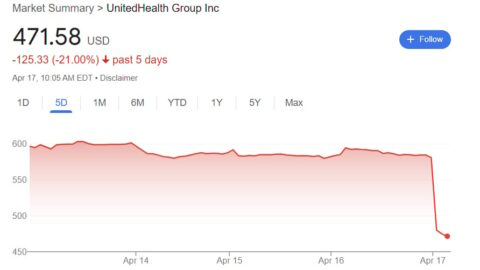Full disclosure: I’m not sure about the publication schedule for the rest of the week. It’s election day here in the United States. I haven’t written much about the election — the media environment is full of idle speculation, and you don’t need more from me — but that doesn’t mean that it is not very much on my mind.
I can’t imagine any sensible organization releasing news this week, and though academic publishing will keep on keeping on, it’s not likely that we’ll see a lot of thoughtful commentary and debate over the next 96 hours.
My goal for the week will be to keep an eye on the pharma policy news but not stress overly about publishing in the absence of something to say.
Instead, I’ll put a lot of my mental energy toward hockey. My social media manager — and reigning Hockey East Player of the Month — plays on Thursday and Friday**, and that feels like a welcome reprieve.
** Streaming on ESPN+ on Thursday and Friday. Or, for the Bostonians, game time is 3 p.m. on Friday. Tickets available here.
The biggest problem with the price control provisions of the IRA ** is the haphazard system of incentives that it created, most of which appear to be accidental. (At least, I hope they’re accidental.)
Most of the incentives flow from the fact that small molecules have four fewer years of freedom from price controls than biologics. That creates a de facto disadvantage for any modality in which small molecules are the right solution, scientifically, such as conditions where crossing the blood-brain barrier is important or cancer therapies where it’s important to get inside a cell.
But it turns out the “pill penalty” also disincentivizes medicines that are a good value.
This is the argument made in a new Health Affairs piece from a team at Tufts CEVR***. The authors looked at clinical and cost data for 20 years of FDA approvals and found that biologics and small molecules delivered about the same health gains, on average.
But because small molecules tended to be less expensive, they were generally a better deal.
And yet … we’re giving less protection to those medicines. Which makes no sense in a world in which we want more cost-effective interventions.
That’s why I consider the incentive structure to be a horrible accident. No one would set out to create a system in which hard-to-genericize medicines are favored over those that can be copied easily. No one would punish efforts to develop cancer drugs. No one would favor R&D that created infusions over pills. No one would give extra favor to more expensive approaches to treating disease.
All of those consequences, however, are baked right into the IRA.
** There’s an argument to be made that the biggest problem with price controls is the overall suppression of drug development. But that problem, at least, was broadly understood — if ignored — in the runup to the law’s passage. The screwed-up incentives were far further below the radar.
*** I’m now a senior fellow at Tufts CEVR, though I had nothing to do with this paper. My enthusiasm for it has nothing to do with my Tufts affiliation … this is good work, objectively!
Adam Fein has some great data showing that hospital markups are an issue even for biosimilars. I get that hospital margins are thin and that they have to grab the revenue where they can get it, but at what point is this all just naked price gouging. They’re charging these rates because they can.
I mean, the discussion here has been going on since at least 2017, but I’m not sure that I’ve ever heard a hospital even go through the motions of defending this kind of thing. I’d be grateful anyone who can point me to the rationale provided for markups, if I’ve missed it.
ELSEWHERE:
Interesting post on BIO.News on the organization’s move to ask CMS to watch Part D formularies more closely in light of concerns that plans are trying to pass IRA-related costs onto smaller biotech companies (for whom certain IRA provisions are phased in as a protection against sudden revenue shocks). File this under “IRA-related access shenanigans.” (That’s a file folder that’s beginning to bulge.)
GoodRx and a bunch of PBMs are being sued by pharmacies over a GoodRx program that allows PBMs to shop the rates of their competitors — via GoodRx — and provide customers the lowest possible rate on generics. The pharmacists, per Reuters, claim that this is an antitrust violation. As usual, I have no particular perspective on the legal issue here, but, legal or no, it’s another great example of how retail pharmacy is being bled dry.
Thanks for reading this far. I’m always flattered when folks share all or part of Cost Curve. All I ask is for a mention or tag. Bonus points if you can direct someone to the subscription page.





